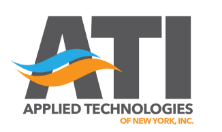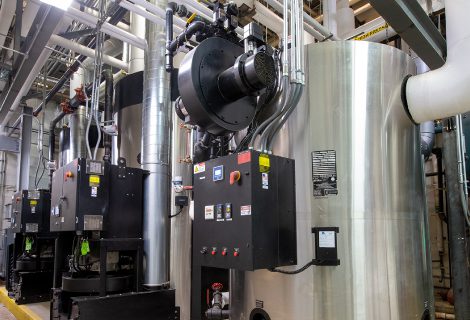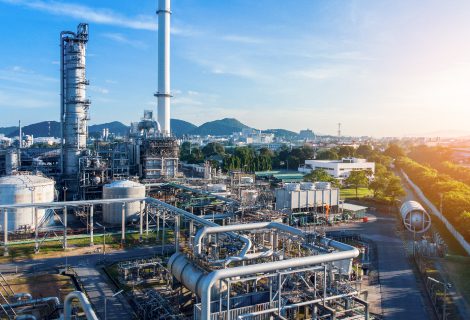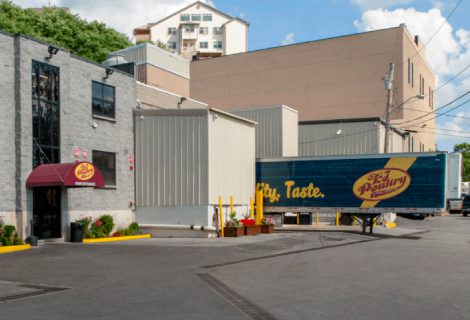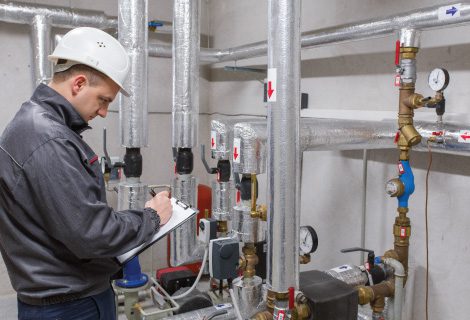A Simple Guide to Industrial Boiler Basics
We get it – understanding the workings of boilers can be relatively confusing for facility managers and end users, especially when you don’t have a solid foundation of industrial boiler basics. Fortunately, the team at Applied Technologies of New York has created an easy-to-understand simple guide to industrial boiler basics.
If you understand how a pressure cooker works, you have the basic premise of how industrial boilers work. The lid on a pressure cooker creates an airtight seal, so the steam produced at 100 degrees Celsius isn’t able to escape.
As the interior pressure of the cooker builds and increases, the boiling point of the water increases as well. Because of this, the temperature inside of the pressure cooker isn’t just at 100 degrees Celsius as it would be in a normal saucepan, but closer to 120 degrees.
The safety valve on the pressure cooker adjusts the pressure to around one bar over air pressure. This allows the food inside of a pressure cooker to cook more quickly.
Industrial boilers work similarly to pressure cookers, but can handle much higher pressures than pressure cookers. Industrial boilers are made from welded steel plates that are exceptionally thick — allowing for pressures of over 30 bars.
Industrial Boiler Design Basics
Industrial boilers must be welded from extra-study plates uniquely engineered to withstand immense pressure and heat. Because of these durability requirements, boilers can easily weigh more than 165 tons. The construction of steam boilers and hot water boilers are very similar. Both steam and hot water boilers will include a cylinder tube, which is also known as a pressure vessel.
Inside of the pressure vessel is the flame tube, which is fired into a burner and reversing chamber that sends flue gases back into a secondary smoke tube. Then the flue gases are again reversed through an external reversing chamber. The reversing chamber redirects flue gases to the third smoke tube pass at the end of the boiler.
Hot Water Boilers vs Steam Boiler
What’s the primary difference between industrial steam boilers vs industrial hot water boilers? As their name implies, hot water boilers operate by being completely filled with hot water. On the other hand, steam boilers are usually only filled approximately 3/4th of the way full, while the top quarter is reserved for steam.
How Do Industrial Boilers Work?
Whether it’s an industrial hot water boiler or an industrial steam boiler, they all depend on fuel to run. The process of heating is initiated as the burner heats or eventually evaporates the water inside of it. It’s actually transported via intricate pipe systems.
Steam boilers transport through the pressure created by the process, while hot water boilers use pumps to move heat throughout the system. Eventually, the condensed steam or cooled water returns back through the pipes to the boiler system, so the heating process can be initiated again.
As the boiler creates heat energy, a byproduct of the process — flue gases — are exited through a chimney system. Because of this, regulating the industrial boiler emissions is a very serious issue.
Different Types of Commercial & Industrial Boilers
With the classification of hot water and steam boilers, there are a vast range of different types of boilers.
- Firetube Boilers may be a valued solution for facilities with low-pressure steam applications, high-pressure steam applications, or hot water applications. Firetube boilers are often used for applications ranging from 51 up to 2,200 HP.
- Watertube boilers produce steam or hot water for commercial or industrial applications. Watertube boilers are used significantly for comfort heating applications and typically have BTU inputs ranging from 500,000 to more than 20,000,000.
- Industrial watertube boilers are primarily steam boilers utilized for applications that require higher pressures and large amounts of steam. Industrial watertube boilers boast the ability to provide additional heat via superheaters.
- Commercial boilers are some of the most diverse and can be designed with a firetube, small water tube, electric resistance. Commercial boilers boast efficiencies as high as 99%.
- Condensing boilers are commonly fueled by gas or oil and are engineered to achieve thermal efficiencies up to 98%.
- Electric boilers are most commonly associated with being compact, clean, easy to install and quiet. Electric boilers do not have combustion considerations, which means they have minimal complexity.
Contact ATI of New York for Industrial Boilers
At ATI of New York, we are proud to offer the best industrial boilers made by premier manufacturers in the world. Whether you’re looking to choose a new boiler for your facility under construction or to replace an existing boiler, the experts at ATI of New York offer the experience help you move your project from conception to completion. As a full service firm, we regularly work closely with:
- Engineers
- Contractors
- Manufacturers
- Distributors
- Property and Facility Managers
- End Users
Contact ATI of New York today to learn more about industrial boiler basics or expert assistance in system selection.
